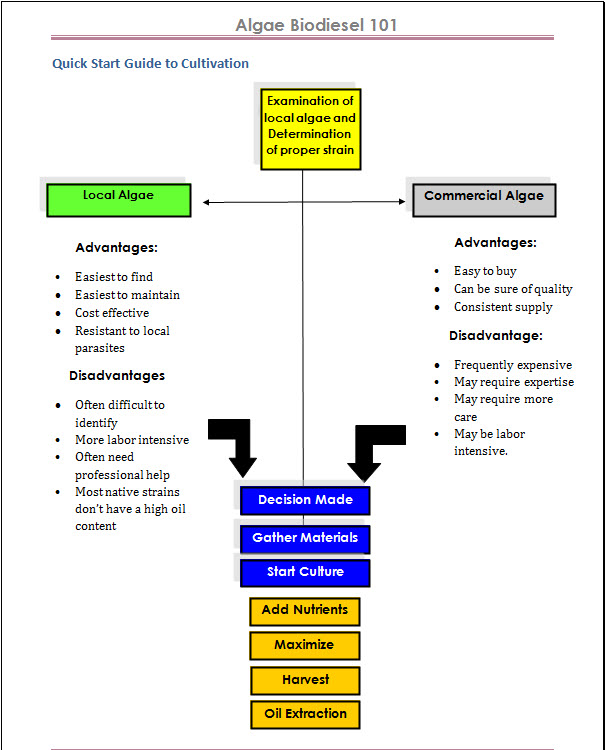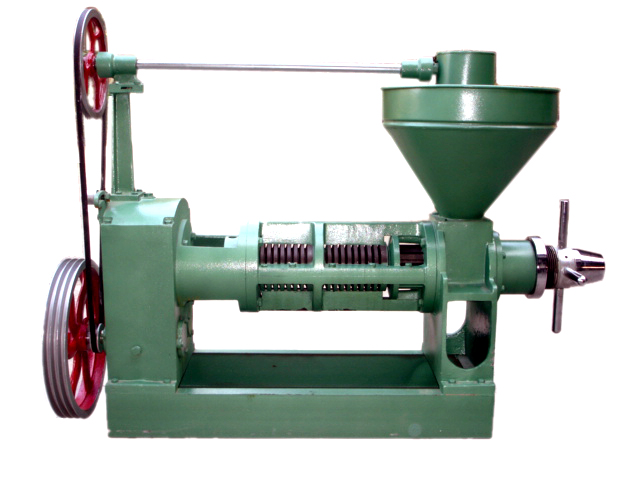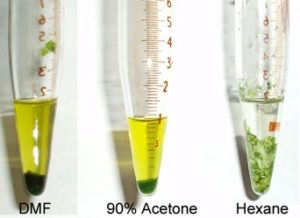
There are significant hurdles to overcome in the algae biofuel process...harvesting and algae oil extraction.
We can divide the algae oil extraction into
- Commercial scale
- .Pilot (Small) scale
Commercial Scale Algae Oil Extraction
On a commercial scale relatively limited volumes of algae oil are currently produced from algal feed stocks. One reason is algae oil extraction suffers from a lack of well-defined and demonstrated industrial-scale methods for extracting and separating of oils and lipids required for enabling biofuel production.
Existing algae oil extraction techniques are another stumbling block on the way to commercialization and are mainly suitable for analytical- and small scale procedures, or for the recovery/removal of high-value products. To produce algal biofuels as competitive bulk commodity, extraction techniques employed must be efficient and effective.
Extraction depends on identifying the particular biological component for extraction, which is dependent on the algal species and growth status. Additionally, different harvest process operations could affect extraction processes, as well as the fuel conversion process.
Pilot Scale, or Small Scale Algae Oil Extraction
Mechanical Disruption (i.e., Cell Rupture)
Expeller pressing (also called oil pressing) is a mechanical method for extracting oil from raw materials. The raw materials are squeezed under high pressure in a single step. When used for the extraction of food oils, typical raw materials are nuts, seeds and algae, which are supplied to the press in a continuous feed.
Expeller presses can recover 75% of the oil from algae. As the raw material is pressed, friction causes it to heat up; in the case of harder celled algae (which require higher pressures) the material can exceed temperatures of 120 °F.

Mechanical disruption can include
- Cell homogenizers, bead mills (or bead-beating),
- Ultrasounds, and autoclaving.
Non-mechanical methods include process such as
- freezing,
- application of organic solvents,
- osmotic shock, and
- acid, base, and enzyme reactions.
The use of microwaves to disrupt cells and increase efficiencies of vegetable lipid and algae oil extraction is a promising development, though applications outside of analytical labs are unclear.
For waste treatment, pretreatment of sewage sludge with “focused pulse” sonication has been shown to improve methane gas production and bio solids reduction in sludge digestion.
Recent work on extraction of lipids from three different types of oleaginous microalgae compared bead beating, sonication, autoclaving, osmotic shock, and microwaves and suggested that microwave disruption prior to solvent extraction is the most efficient method.
Organic Co-solvent Mixtures
It should be said at the outset that using chemicals of this nature can cause cancer. EXTREME care needs to be in place when handling them.
The concept behind the earliest and well-known co-solvent extraction procedure. After the extraction reaction is complete, water (which is not miscible with chloroform) is added to the co-solvent mixture until a two-phase system develops in which water and chloroform separate into two immiscible layers. The lipids mainly separate to the chloroform layer and can then be recovered for analysis.
Supercritical Fluid Extraction
Supercritical fluid extraction utilizes the enhanced solvating power of fluids above their critical point. It can be processed using solid and liquid feeds. Supercritical fluid extraction techniques have been used in the commercial extraction of substances from solid substrates, e.g. caffeine from coffee beans, for more than two decades.
All of these techniques have disadvantages:
- Mechanical pressing generally requires drying the algae first, which can be energy intensive, unless solar drying is used, then it is slow.
- Using of chemical extraction solvents present some very real safety, health and environmental issues
- Supercritical extraction requires high pressure equipment that is both expensive and energy intensive.
Most manufacturers of algae oil use a combination of mechanical pressing and chemical solvents in extracting oil.
Commercial Scale Algae Oil Extraction
Enzymatic extraction - Enzymatic extraction uses enzymes to degrade the cell walls with water acting as the solvent, this makes fractionation of the oil much easier. The costs of this extraction process are estimated to be much greater than hexane extraction.
Osmotic shock - Osmotic Shock is a sudden reduction in osmotic pressure, this can cause cells in a solution to rupture. Osmotic shock is sometimes used to release cellular components, such as oil.
The challenges to algae oil extraction are:
- Microscopic algae suspended in water are difficult to harvest and almost indestructible in their habitat
- Algae cell walls are very high elasticity.
- Even once water has been removed, algae retains its hard outer shell
- Mechanical rupture can only be applied once algal dy mass is dry.
Heterotrophic Production

Other methods for extraction and fractionation include the production of oils using heterotrophic algae. In this scenario, non-photosynthetic algae are grown using sugars as energy source and using standard industrial fermentation equipment. Some private companies (Solzyme) have engineered algae that secrete oil into the fermentation media that can be recovered and later refined into a biofuel; this approach significantly reduces the capital and operating cost for an extraction process.
The potential benefits of this approach are
- The use of standard fermentation systems,
- Higher productivity compared to photosynthetic systems,
- Ease of scale-up,
- Avoidance of expensive extraction scheme(s),
- The ability to maintain the integrity of the fermentation catalyst and
- Use of sugar-based feed stocks.
However, significant downsides to this approach include many of the same feedstock logistics challenges faced by the cellulosic industry. Chief among them is the logistical challenge of securing a sustainable biomass feedstock to supply to feed large-scale heterotrophic “algal-refinery” operations. Algae oil extraction technologies still have a ways to go for mass production or commercialization to take place. However, small scale methods of oil extraction have been proven to be effective.
Other developments in the field
Origin Oil Single Step Extraction System
According to the company hand-out, in 2009 OriginOil developed a "single-step, low cost algae oil extraction system.

In one step, Quantum Fracturing™ combines with electromagnetism and pH modification to breakdown cell walls.
Algae oil rises to the top for skimming and refining, while the remaining biomass settles to the bottom for further processing as fuel and other valuable products."
While they say "Low-cost" one has to ask "Low cost compared to what?"
In a nutshell, it seems to be using ultra-sound coupled with electromagnetic pulses to break the cell walls, releasing the oil.
Algae biofuels and nanotechnology
Nanotechnology has the potential to provide solutions to several of the challenges faced in algae growth and harvesting, lipid extraction, and processing of the biofuels. While this has been explored in scientific papers I know of no instance of anyone using this algae oil extraction technique.
You might also be interested in...

The Algae Biodiesel Process
The algae biodiesel process is fairly straight-forward, however the devil is in the details. Read More

The Two Biggest Mistakes in Algae Biofuels
Without a doubt, The Two Biggest Mistakes I saw as a biofuel consultant in advanced biofuels were...Read More

Algae Biofuels: Separating Myth From Fact
Lot so wild stories and wild claims being made in the algae biofuels space. Sifting through the flotsam of cyberspace isn't easy... Read More
The Algae Revolution Has Begun
Hello David. I trust you are well. Your project is definately a labor of love. I have spent about 3+ hrs reading. looks like an 8 hr read to get all the details. I would again thank you for your work, easy reading, to the point, well organized.





